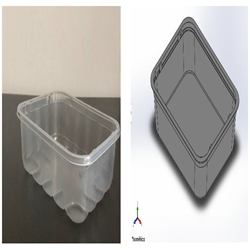Uric acid is the primary end product of purine metabolic pathway which is generated by the enzyme xanthine oxidase. Higher uric acid occurrence in body can lead to some disorders such as gout, arthritis, cardiovascular disease, kidney disease and hyperuricemia. Instead of causing disease at higher concentration, abnormally low uric acid will also lead to multiple sclerosis. Non-invasive based biosensor provides an alternative method to detect uric acid in human metabolite without drawing blood or puncturing the skin. Non-invasive method allows painless procedure and very useful for people with problems in collecting blood samples such as hemophiliacs, neonates, elderly people, and disabled people. This research focus on the development of non-invasive quantum dots (QDs)-enzyme biosensor for uric acid detection. Two types of biosensors were developed namely CdS DQs/enzymes/sol-gel based biosensor and manganese doped CdS DQs/enzymes/sol-gel based biosensor. The developed biosensor presents a novel convenient technique using sol-gel encapsulated QDs-enzyme in 96 well plates. The system consists of uricase/horseradish peroxidase (HRP) enzymes and QDs which is used as fluorescence indicator to reveal fluorescence property of the system resulting from enzymatic reaction of uricase/HRP in the presence of uric acid. Upon the addition of uric acid to the hybrid uricase/HRP-CdS QDs, it will be oxidized to yield allaintoin, CO2, and H2O2. The produced H2O2 is able to quench the QDs fluorescence intensity which is proportional to the uric acid concentration. The developed biosensor could detect up to 96 samples per assay within 20 minutes with linear concentration range of 0.06-2.00 mM, limit of detection (LOD) of 0.05mM and 0.03-1.00 mM, limit of detection (LOD) of 0.02 mM for undoped and doped QDs, respectively. Mn doped MPA-CdS biosensor exhibits longer stokes shift hence less noise and interference from foreign substances in uric acid detection compared to undoped biosensor. This observation proved the higher sensitivity was obtained with doped QDs biosensor compared to undoped QDs biosensor. The proposed method also shown its potential for the determination of uric acid concentration in urine samples and provides a promising tool for clinical diagnosis.
*Abstract of the thesis (PhD) by Nur Ellina Azmi.
For further information please contact:
Jaafar Abdullah, PhD
jafar@upm.edu.my
Date of Input: 29/09/2023 | Updated: 29/09/2023 | nurnazeera
MEDIA SHARING























